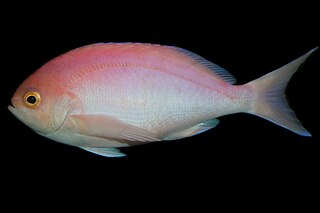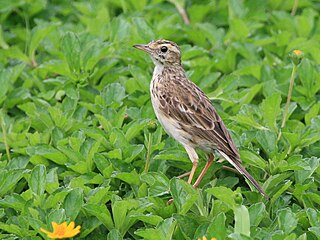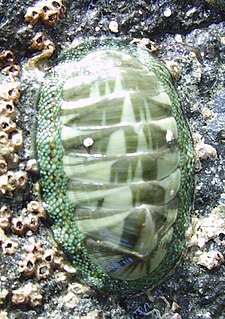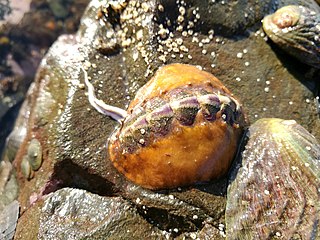
The pink maomao, also known as the longfin perch, is a species of marine ray-finned fish, a member of the subfamily Anthiinae which is part of the grouper and sea bass family Serranidae. It is found in the southern Pacific and the southeastern Indian Ocean.

The Australasian pipit is a fairly small passerine bird of open country in Australia, New Zealand and New Guinea. It belongs to the pipit genus Anthus in the family Motacillidae.

The South Island oystercatcher or South Island pied oystercatcher is one of the two common oystercatchers found in New Zealand. Its name is often contracted to the acronym "SIPO". The indigenous Māori name is tōrea. The scientific name commemorates the German ethnographer, naturalist and colonial explorer Friedrich Hermann Otto Finsch.

Eudoxochiton nobilis, commonly called the noble chiton, is a large chiton of the family Callochitonidae. The Māori name is Rangitīra.

Chiton glaucus, common name the green chiton or the blue green chiton, is a species of chiton, a marine polyplacophoran mollusk in the family Chitonidae, the typical chitons. It is the most common chiton species in New Zealand. Chiton glaucus is part of a very primitive group of mollusc with evidence of being present in up to 80 million years of the fossil record.

Rhyssoplax is a genus of chitons in the family Chitonidae, endemic to Australia, New Zealand, New Caledonia, Norfolk Island, and the Kermadec Islands.

Cryptoconchus is a genus of chitons in the family Acanthochitonidae.

Ischnochiton maorianus, sometimes called the variable chiton, is a fast moving species of chiton in the family Ischnochitonidae, endemic to the main islands of New Zealand where it is abundant.
Ischnochiton circumvallatus is a common medium-sized species of chiton in the family Ischnochitonidae, endemic to the southern South Island and the Subantarctic Islands of New Zealand where it habits exposed rocky shores down to the low intertidal zone. Coloured light buff to light green on both surfaces, occasionally with reddish brown. Moderately raised shell and narrow girdle which has small scales. Broods larvae along the sides of the body.

Sypharochiton pelliserpentis is a species of chiton in the family Chitonidae. As the species name suggests, the surface of the girdle in this chiton has a pattern of overlaying scales resembling snakeskin.

Onithochiton neglectus neglectus is a subspecies of chiton in the family Chitonidae.

Acanthochitona zelandica is a species of chiton in the family Acanthochitonidae, also sometimes known as the hairy, or "tufted," chiton. It probably developed during the mid to late Pleistocene, and is endemic to New Zealand.

Notoplax violacea is a species of chiton in the family Acanthochitonidae, endemic to all coasts of New Zealand, where it is common in northern areas.

Clothing in ancient Greece primarily consisted of the chiton, peplos, himation, and chlamys. Ancient Greek civilians typically wore two pieces of clothing draped about the body: an undergarment and a cloak.

Lunella smaragda, common name the cat's eye snail, is a species of sea snail, a marine gastropod mollusk in the family Turbinidae, the turban snails.
Tasmantrix tasmaniensis is a moth of the family Micropterigidae. It is known from in wet forests of western Tasmania.

Conus denizi is a species of sea snail, a marine gastropod mollusk in the family Conidae, the cone snails, cone shells or cones.
Plaxiphora caelata is a small chiton in the family Mopaliidae, endemic to the main islands of New Zealand, Stewart Island and the Chatham Islands.
Plaxiphora egregia is a distinctive chiton in the family Mopaliidae, endemic to the South Island of New Zealand, where it is uncommon.

Te Matuku Marine Reserve is a marine reserve administered by the New Zealand Department of Conservation. It includes Te Matuku Bay, one of the largest and least disturbed estuaries on Waiheke Island, as well as a surrounding area of sea. It covers an area of 690 ha and was established in 2003.















